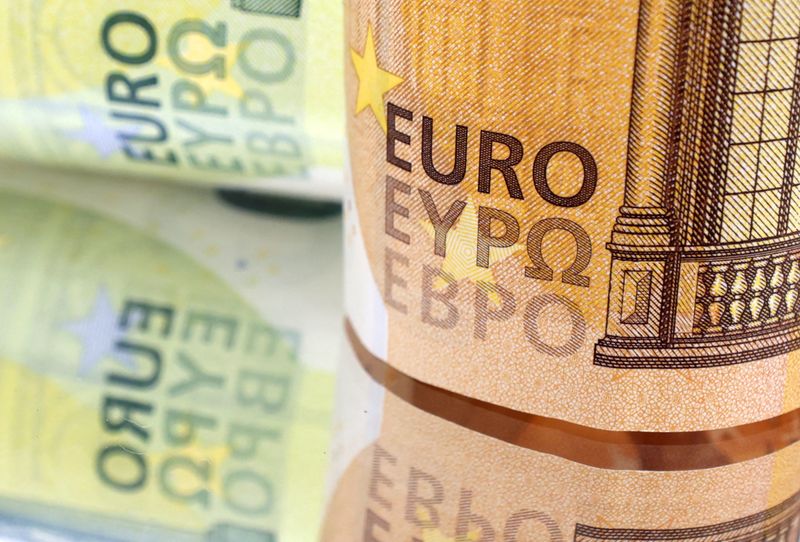Forex
Euro tumbles as Macron calls snap French election

By Karen Brettell and Alun John
NEW YORK/LONDON (Reuters) – The euro fell sharply on Monday after gains by the far right in European Parliament elections on Sunday prompted French President Emmanuel Macron to call a snap national election.
The uncertainty in France adds one more element to what will be a busy week for markets with U.S. inflation data due on Wednesday, the same day as a Federal Reserve policy meeting, and a Bank of Japan meeting rounding off the week.
The euro dropped 0.6% on the dollar to $1.0735, its lowest since May 9. It also fell 0.5% on sterling to a near two-year low of 84.49 pence, and was last down 0.5% on the Swiss franc at a seven-week low of 0.9632 francs.
The increase in support for right wing parties was “generally what was expected, but the surprise element is that Macron has reacted by calling a snap election, so that makes the market more nervous,” said Lee Hardman, senior currency analyst at MUFG.
The U.S. dollar was also boosted after Friday’s jobs report showed that employers added more jobs than expected in May, while wages also rose more than anticipated, leading traders to pare back expectations that the U.S. central bank will cut rates as soon as September.
“The market was clearly caught wrong footed,” said Paula Comings, head of foreign exchange sales at U.S. Bank in New York.
Wednesday’s consumer price index (CPI) for May will be the next major data point to drive Fed expectations.
If inflation comes in softer, “the market’s going to feel some relief. I think the dollar could weaken, but probably not out of its recent range,” said Comings. “But on the other hand, I think if inflation doesn’t let up and the number comes in high, the die is cast to the Fed.”
In that scenario, “euro/dollar would continue to trade down towards the lower end of the range” and it will “impact (emerging market) currencies disproportionately,” Comings said.
Fed officials have said that they want to see several months of inflation falling back closer to their 2% annual target before cutting rates.
Economists polled by Reuters expect headline consumer price inflation to ease to 0.1%, from 0.3% last month, and core price pressures to remain steady on the month at 0.3%.
Fed policymakers will update their economic and interest rate projections when they conclude their two-day meeting on Wednesday.
At the last such release in March, the median projection was for three 25 basis point cuts this year and investors anticipate the new forecast will show an expectation of fewer rate reductions.
The was last up 0.26% at 105.33, the highest since May 14.
The paring back of expectations for rate cuts has been supporting the dollar for much of 2024, with the Japanese yen the worst performer due to the large interest rate gap between the U.S. and Japan.
The dollar was last up 0.15% on the Japanese currency at 156.93 yen, having jumped 0.7% on Friday after the payrolls print.
The Bank of Japan will hold its two-day monetary policy meeting on Thursday and Friday, with the central bank widely expected to maintain short-term interest rates in a 0-0.1% range.

Reuters reported last week that BOJ policymakers are brainstorming ways to slow its bond buying and may offer fresh guidance.
In cryptocurrencies, bitcoin gained 0.06% to $69,319.

 Forex3 years ago
Forex3 years agoForex Today: the dollar is gaining strength amid gloomy sentiment at the start of the Fed’s week

 Forex3 years ago
Forex3 years agoUnbiased review of Pocket Option broker

 Forex3 years ago
Forex3 years agoDollar to pound sterling exchange rate today: Pound plummeted to its lowest since 1985

 Forex3 years ago
Forex3 years agoHow is the Australian dollar doing today?

 Cryptocurrency3 years ago
Cryptocurrency3 years agoWhat happened in the crypto market – current events today

 World3 years ago
World3 years agoWhy are modern video games an art form?

 Commodities3 years ago
Commodities3 years agoCopper continues to fall in price on expectations of lower demand in China

 Economy3 years ago
Economy3 years agoCrude oil tankers double in price due to EU anti-Russian sanctions





















